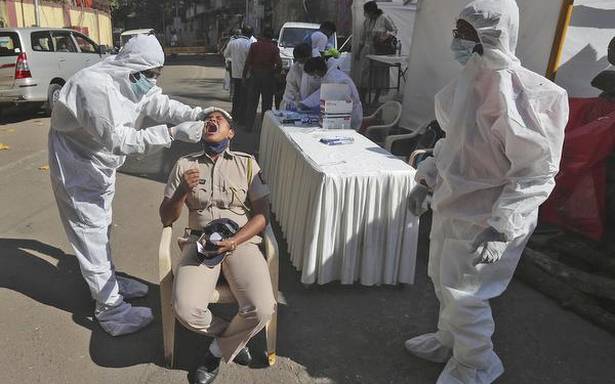COVID-19 active caseload remained below 3 lakh for the 14th consecutive day
Daily new COVID-19 cases in the country remained below 20,000 for the third consecutive day taking the virus caseload to 1,03,40,469, while the recoveries surged to 99.46 lakh, according to the Union Health Ministry data updated on January 4.
A total of 16,504 people tested positive for coronavirus infection in a day. The death toll increased to 1,49,649 with 214 new fatalities, the data updated at 8 a.m. showed The number of people who have recuperated from the disease surged to 99,46,867 pushing the national recovery rate to 96.19%, while the COVID-19 case fatality rate stands at 1.45%.
The COVID-19 active caseload remained below 3 lakh for the 14th consecutive day.
There are 2,43,953 active cases of coronavirus infection in the country which comprise 2.36% of the total caseload, the data stated. India’’s COVID-19 tally had crossed the 20-lakh mark on August 7, 30 lakh on August 23, 40 lakh on September 5 and 50 lakh on September 16. It went past 60 lakh on September 28, 70 lakh on October 11, crossed 80 lakh on October 29, 90 lakh on November 20 and surpassed the one-crore mark on December 19.
According to the ICMR, 17,56,35,761 samples have been tested up to January 3 with 7,35,978 samples being tested on Sunday.
The 214 new fatalities include 35 from Maharashtra, 26 from West Bengal, 25 from Kerala, 16 from Uttar Pradesh and and 14 each from Delhi, Chhattisgarh and Madhya Pradesh.
A total of 1,49,649 deaths have been reported so far in the country including 49,666 from Maharashtra followed by 12,156 from Tamil Nadu, 12,107 from Karnataka, 10,585 from Delhi, 9,792 from West Bengal, 8,403 from Uttar Pradesh, 7,115 from Andhra Pradesh and 5,376 from Punjab.
The Health Ministry stressed that more than 70% of the deaths occurred due to comorbidities.
“Our figures are being reconciled with the Indian Council of Medical Research,” the Ministry said on its website, adding that State-wise distribution of figures is subject to further verification and reconciliation.
Source: Read Full Article

